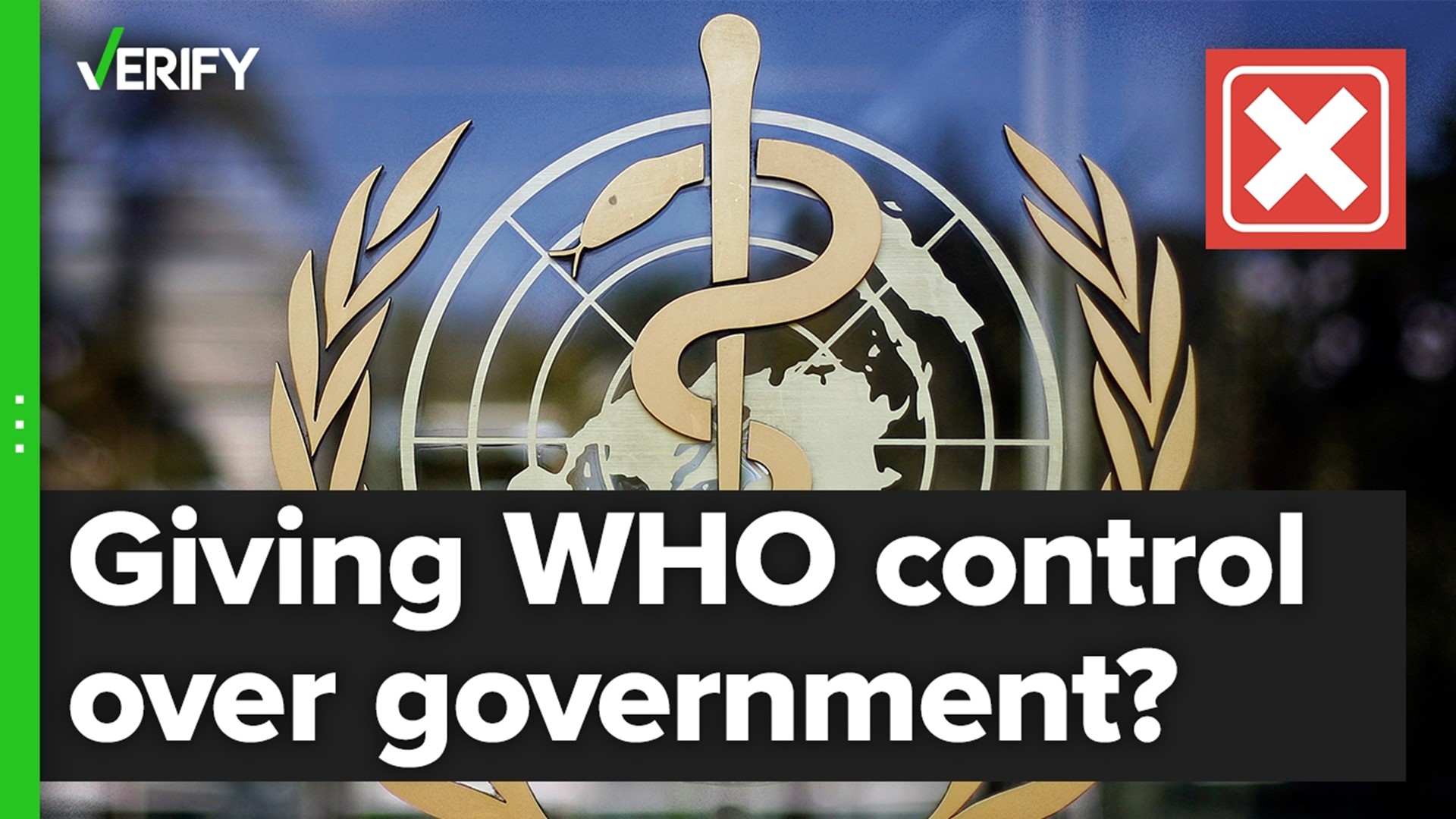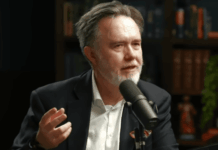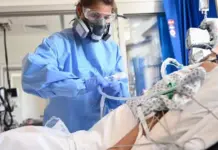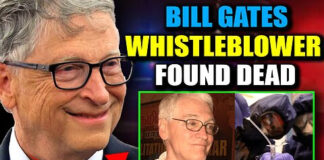By Libby Klein,
One might think that of course we need an international body that can help everyone around the world to work together in times of crisis to combat pandemics and other scary global things.
Well that sounds sensible.
One might think that’s what we have the World Health Organisation (WHO) for.
Well that may have been the original idea, but it turns out there’s a few issues with the WHO. How effective is it and what role should it have?
Seems the world has skipped past those questions and gone straight to: let’s give the WHO all the power it needs so that it can do a better job of controlling pandemics.
And let’s not just tweak one or two things here and there. Let’s have a whole new treaty. And let’s call it something really long, like Convention, Agreement or Other International Instrument on Pandemic Prevention, Preparedness and Response and give it a confusing acronym, like CA+.
AND let’s also simultaneously amend the existing International Health Regulations. In ways that overlap. Through forums which are supposedly transparent but which are largely conducted in secret.
There’s a lot going on here. But don’t be fooled by the flowery language or put off by the density and complexity of the documents. Be assured there are some big issues which warrant your attention.
I’ve listed some of the issues in the most recent proposals to amend the International Health Regulations below. Please add your comments and share your insights!
Note: they don’t call a spade a spade and they don’t call a pandemic a pandemic. They call it a “Public Health Emergency of International Concern”. There’s 2 reasons for that:
they like to use long confusing names and make up impressive acronyms (“PHEIC”)
they want to have power to do all sorts of things whether or not there’s actually a pandemic and even where they think there might be something happening which one day may result in a pandemic.
Scope
The scope of WHO’s powers is to be broadened significantly, from “public health risk” to “all risks with a potential to impact public health” (Article 2)
Obligations are to be legally binding
Proposed new article 13A recognises the WHO as the authority of public health response during a Public Health Emergency of International Concern. (Note: none of the published submissions make this suggestion. Where did it come from?)
Article 13A includes an undertaking by all Member States, that they will follow WHO’s “recommendations”. Earlier in the document, “recommendations” are defined to be legally binding.
Countries are also required to ensure they have regulatory agency with legal authority to implement WHO’s dictates. (Article 4 para 1)
Countries can contest the legally binding recommendations but the Emergency Committee’s review decision will be final, following which the country must report to the WHO that it has complied. (Article 43 para 6).
The World Health Assembly can make decisions “on the strengthening of the implementation of these Regulations and improvement of compliance” – obscure language – does this mean the World Health Assembly can decide on sanctions?
Control of financing, production and supply of health products
Developed countries must provide funding (Article 44 para 2(f); Annex 1 new para “1 bis”)
The World Health Assembly will oversee expenditure of funds that Member States are required to provide (Article 44A para 2).
WHO decides on allocation of health products (Article 13A).
WHO requires Member States to scale up production (Article 13A para 4), and to supply health products to the WHO or other Member States as directed by the WHO (Article 13 para 5).
WHO tells us what we can do
The Director General – a single person – can make temporary, binding “recommendations” on the basis that an event has the potential to become a Public Health Emergency of International Concern, and those recommendations can continue in force beyond the end of a Public Health Emergency of International Concern (Article 15).
The concept of public health measures which are aimed at achieving “the appropriate level of health protection” is to be removed. The new objective is to attain the “highest achievable level of health protection” without any consideration of proportionality.
WHO can impose restrictions on international travel – and may not even disclose the information it has relied on in doing so – Article 11.
Any discussions that countries have amongst themselves must be reported to the WHO (Article 44 para 3).
Countries must comply with requests by WHO or other countries (Annex 10).
Governments will be required to enforce compliance with WHO health measures by all actors including NGOs (Article 42).
WHO tells us what we can say
Countries must cooperate in censorship of information which the WHO deems to be “false and unreliable (Article 44 para 1(h)).
WHO will strengthen capacities to counter misinformation and disinformation (Annex 1 para 7).
A single person decides when there is a Public Health Emergency of International Concern
The Director General – a single person – unilaterally determines whether there is a (potential or actual) Public Health Emergency of International Concern in a particular location. (Article 12 para 1).
In deciding whether to declare a Public Health Emergency of International Concern, the Director General does not have to consult with the country concerned or its own Emergency Committee (Article 12 para 2). (And at any rate the Director General chooses the members of the Emergency Committee – Article 48 para 2.)
The ability of the country to object to the WHO’s declaration of a Public Health Emergency of International Concern has been removed (Article 12 para 3).
Your personal data will be shared globally
There is to be “secure global digital exchange of health information” (Article 44 para 2(d))
Centralised data sharing is to be controlled by the WHO (Article 11)
Governments can agree to share and store your personal health data (Article 45 para 4).
The focus is on production and supply of pharmaceutical products rather than safety and efficacy
Regulatory dossiers submitted by manufacturers concerning safety and efficacy, and manufacturing and quality control measures, have to be shared, but countries can only use that information for accelerating the manufacture and supply of those products and technologies. There is no reference to using the data to make their own assessment of safety and efficacy, betraying a blind spot on the part of the drafters: they are so focussed on facilitating the imposition of pharmaceutical products on everybody that they don’t even think to make provisions regarding sharing of information for the purpose of assessing or monitoring safety and efficacy.
There is a requirement to adopt “legal, administrative and technical measures to diversify and increase production of health products” (Annex 1 para 7) (but not to promote development of early treatment protocols for example).
WHO can have secret dealings with non-State actors
WHO can deal with non-State actors as it sees fit and does not have to provide full disclosure.
Rules of engagement: Malaysia (article 12 para 7) and Africa (article 13A para 7) have proposed new wording which ostensibly puts some guard rails around how the WHO engages with non-State actors, by requiring the WHO to comply with paragraph 73 of the Framework for Engagement of Non-State Actors (FENSA). However, that paragraph in FENSA does not impose any constraints on the WHO. On the contrary, it grants the Director-General complete flexibility: “…the Director-General may exercise flexibility as might be needed in the application of procedures of this framework in those responses, when he/she deems necessary, in accordance with WHO’s responsibilities as health cluster lead.” This complete flexibility is given to a single individual, the Director-General of the WHO.
In terms of disclosure, the new article 13A does require the WHO to report all its engagements with other stakeholders to the World Health Assembly, and to “provide documents and information relating to such engagements upon request of State Parties.” However, this is far from requiring full disclosure. The WHO could supply summary documents and information, rather than making full disclosure. The WHO has not disclosed who has proposed this new article 13A.
Source: https://libbyklein.substack.com
Disclaimer: We at Prepare for Change (PFC) bring you information that is not offered by the mainstream news, and therefore may seem controversial. The opinions, views, statements, and/or information we present are not necessarily promoted, endorsed, espoused, or agreed to by Prepare for Change, its leadership Council, members, those who work with PFC, or those who read its content. However, they are hopefully provocative. Please use discernment! Use logical thinking, your own intuition and your own connection with Source, Spirit and Natural Laws to help you determine what is true and what is not. By sharing information and seeding dialogue, it is our goal to raise consciousness and awareness of higher truths to free us from enslavement of the matrix in this material realm.
 EN
EN FR
FR



























Health Tyranny for the globalist New World Order Madness genocidal agenda! The devil is here to steal kill and destroy.
This explanes why Sweden for example have changed the definition of the word reccomend. In almost 2 years, they have claimed that the word have another meaning, that it’s bindning.
Agenda 2030 and The New World Order is here and the one state is WHO!